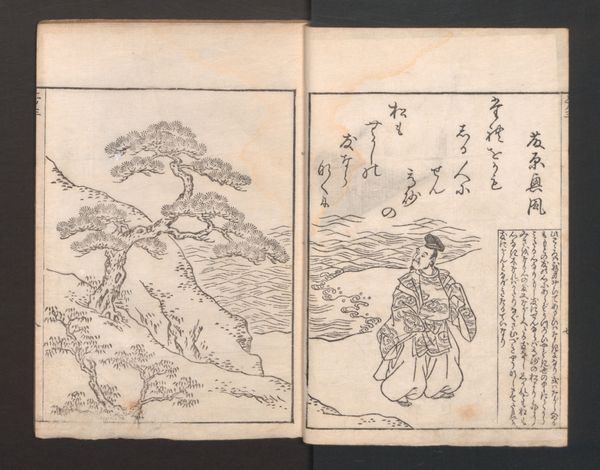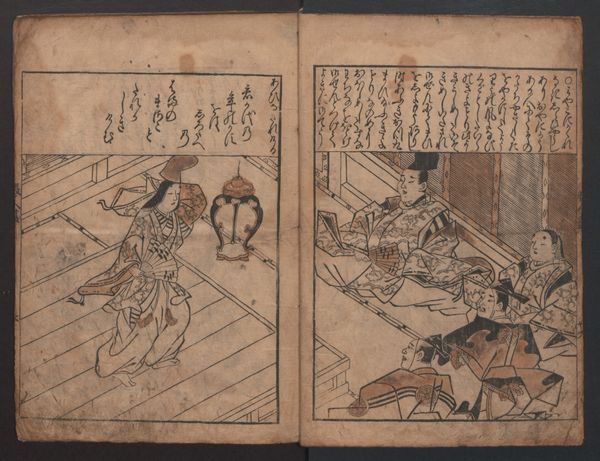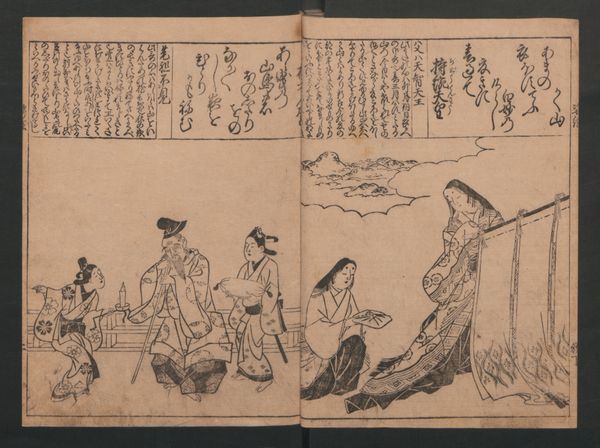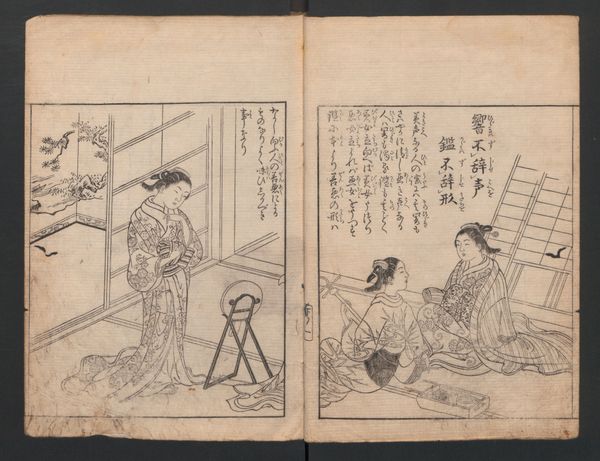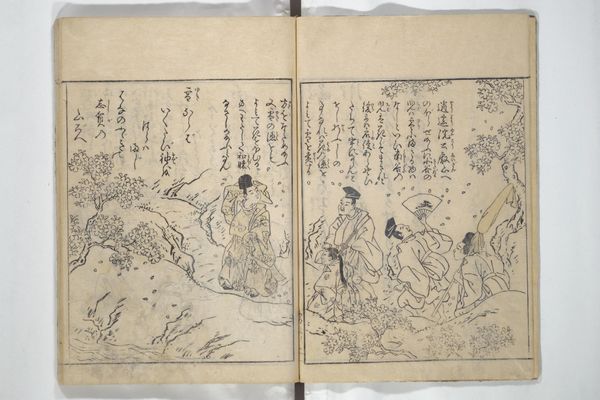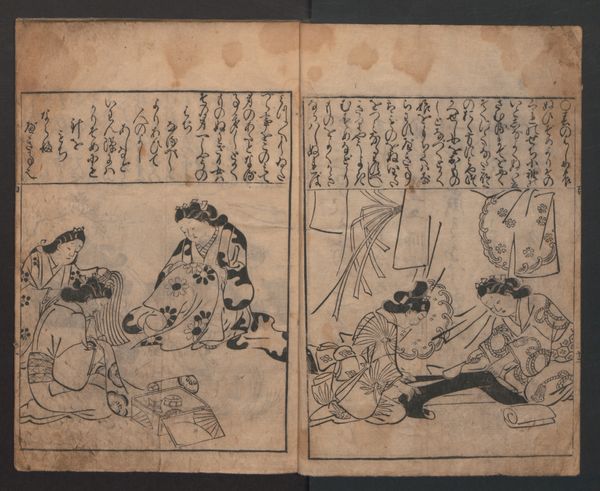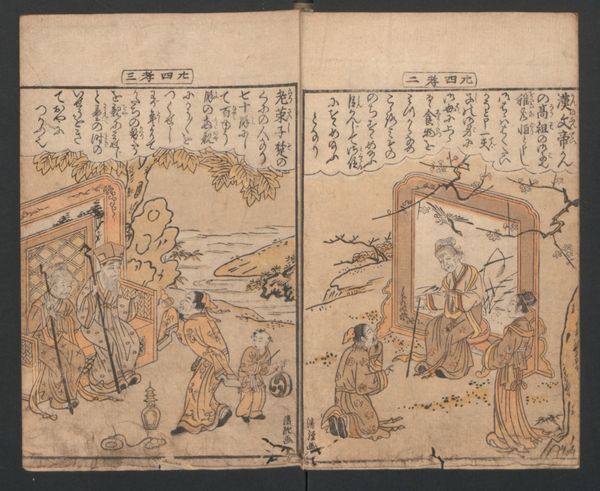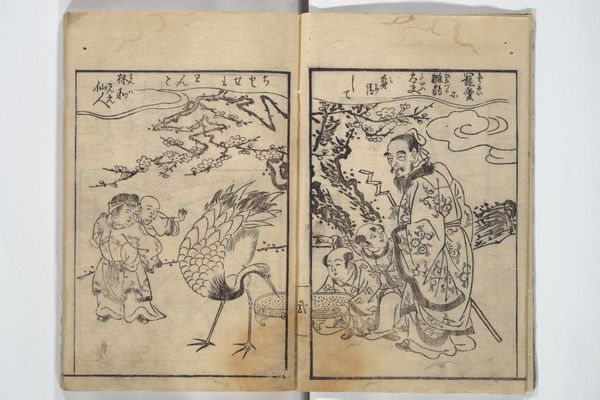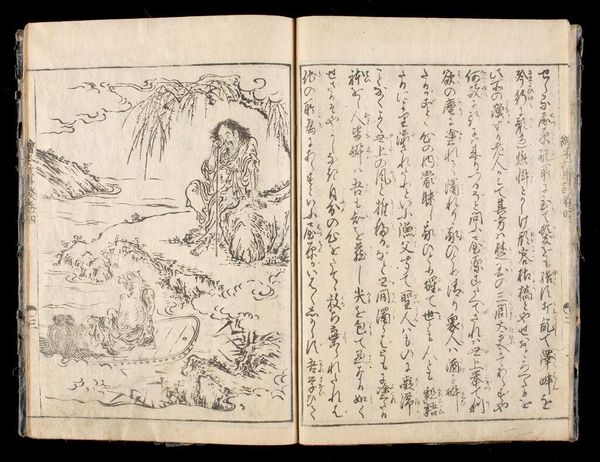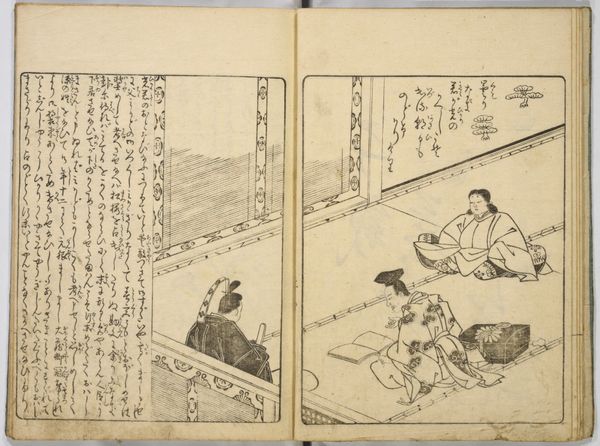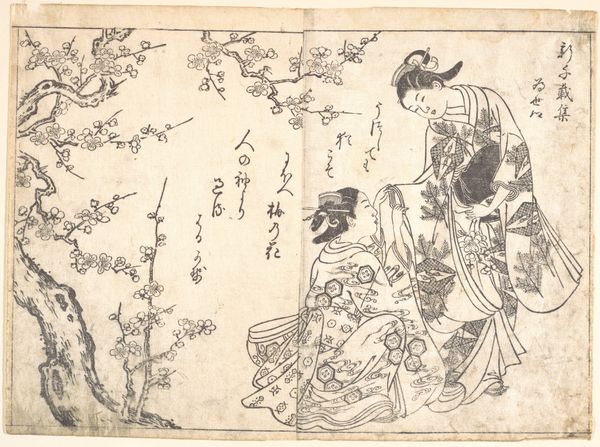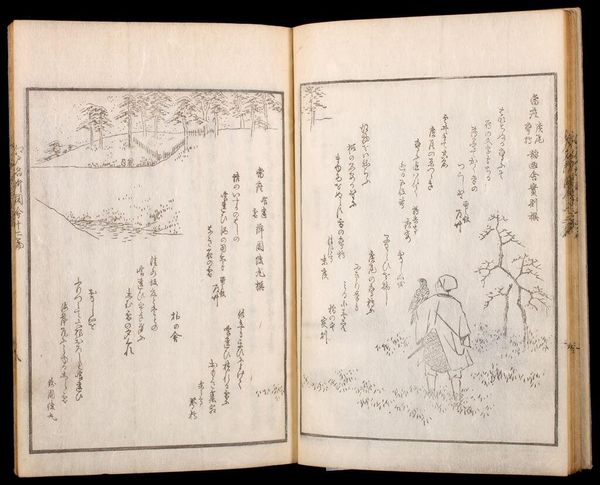
Portraits for One Hundred Poems about One Hundred Poets (Sugata-e hyakunin isshu) 1695
0:00
0:00
drawing, print, paper, ink, woodcut
#
tree
#
drawing
#
aged paper
#
narrative-art
# print
#
pen sketch
#
book
#
asian-art
#
sketch book
#
landscape
#
ukiyo-e
#
japan
#
figuration
#
paper
#
personal sketchbook
#
ink
#
sketchwork
#
pen-ink sketch
#
woodcut
#
men
#
pen work
#
sketchbook drawing
#
genre-painting
#
storyboard and sketchbook work
#
sketchbook art
Dimensions: Each: 8 3/4 × 6 3/8 × 1/4 in. (22.2 × 16.2 × 0.6 cm)
Copyright: Public Domain
Hishikawa Moronobu created this woodblock print, "Portraits for One Hundred Poems about One Hundred Poets," during the Edo period in Japan. This was a time of relative peace and economic growth, but also strict social hierarchy, influenced by Confucian ideals. These prints, known as ukiyo-e, often depicted scenes of daily life, landscapes, and the courtesans and actors of the floating world. Moronobu was a key figure in popularizing ukiyo-e, shifting its focus from illustrating classical literature to reflecting contemporary urban culture. The “One Hundred Poets” anthology, however, had deep roots in the court culture of the Heian period. The pairing of classical poetry with images of contemporary life, suggests a bridging of social spheres. Who was afforded access to what kind of knowledge? The figures are rendered with delicate lines, and the composition reveals the artist’s engagement with both traditional artistic conventions and the emerging aesthetics of his time. It speaks to an emotional longing for a connection to the past.
Comments
No comments
Be the first to comment and join the conversation on the ultimate creative platform.
